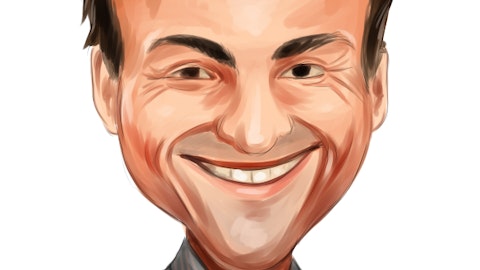Sebastiaan van der Schoot: Okay. Got it. Thank you so much.
Operator: Thank you. We will now take the next question from the line of Phil Nadeau from Cowen. Please go ahead.
Unidentified Participant: Hi. This is Alex on for Phil. Thanks for taking my questions. Congrats on the progress thus far. Just wondering if you could comment on the speed of patients in the abstract with vein-to-vein time greater than seven days. Any factors that may have led to the longer time here? Any ongoing efforts to kind of optimize this process and further reduce the average vein-to-vein time? Thanks.
Jeevan Shetty: So if I — the question about the beyond seven day vein-to-vein time, across the board — and again, at ASH, you see that seven day vein-to-vein time is achieved quite consistently. And the patients in the abstract, there were — I think you’re referring to CLL. And in CLL, it was related to the yield from the patients. But I reiterate the point I made previously, which is that we continue to have good efficacy, in vivo expansion and the increase in the cell viability of those patients as well. So it was related to the — what we were able to get from the patient rather than anything specific to the actual — the process itself.
Paul Stoffels: And to be in detail there, two patients had a slight delay with — from eight to nine — eight and nine days. One patient, in one case, we had to do a restart because of an issue in the manufacturing. And so that is why there’s variability in delay. Yes?
Jeevan Shetty: And the important point would be that all patients were treated within 14 days, and that is incredibly competitive of what is already out there. But most of the patients were seven days.
Unidentified Participant: Thanks so much.
Operator: Thank you. We will now take the next question from the line of Jacob Mekhael from KBC Securities. Please go ahead.
Jacob Mekhael: Hi, there and thanks for taking my question. I have two, if I may. My first one is, how do you look at the expansion of CD19 CAR-T into other autoimmune diseases beyond lupus? Would you consider a basket trial set-up, for example, to capture a number of indications in one go? And my second question is, can you perhaps share some feedback on the process of setting up new sites in the U.S.? And how many do you expect to have up and running by the end of 2024, let’s say?
Paul Stoffels: Yes. Well, we are considering additional activities beyond SLE and looking actively at all indications. We are not very much favoring a bucket study because all of these diseases have their own evaluation criteria, both on the inclusion side, but also on the progress and the success side. And with a bucket study in that area, most likely, we will not advance very quickly to good conclusions and moving later on into Phase II/III. So we will consider other indications, but do it in a very, let’s say, organized way that the indication — the early data leads to conclusions on what we can do for it. So that’s the way we approach this. And we’re starting with SLE, but are considering several other indications going forward.
Thad Huston: Yes. We haven’t disclosed the number of U.S. sites that we’re going to set up for ’24 at this time. We are actively working with a number of different additional sites beyond Landmark Bio, and we’ll provide updates in the future.
Jacob Mekhael: Okay. Thank you.
Operator: Thank you. [Operator Instructions] We will now take the next question from the line of Brian Balchin from Jefferies. Please go ahead.
Brian Balchin: Hey, thanks. Can you just help us with the latest timing on when you expect to have an asset on the market? Is it still ’26, ’27? I think that’s what you last said on the first half call, likely CD19 CAR-T, I think it was, despite the delayed time lines assuming…
Paul Stoffels: Yeah. That’s what we assumed before. Yes. And it’s kind of — yes, the review. Yes.
Brian Balchin: Got it. Yes, that’s on a BTD, right?
Paul Stoffels: Sorry?
Brian Balchin: On a breakthrough…
Paul Stoffels: Breakthrough designation, yes. We think with the encouraging data we have, we hope to be able to recruit in an accelerated way more patients into the pivotal, and it still lands us with ’26, ’27. That is the current time line which we’re still looking for.
Brian Balchin: Got it. Thanks. And just the second one, just on T-Charge manufacturing from Novartis, PHE885. I think that is 10 days door-to-door, showed good data at ASCO, because yours is seven days. But just curious to know how you’re thinking about that as a competitor to your GLPG5301.
Paul Stoffels: Yeah. T-Charge is a different process where you produce fast then freeze and do the quality control and the quality release in the next so many days. And that results in a 10 day — I don’t know exactly how many days, but approximately 10 days. What we do is we keep the cells in fresh condition in the incubator. We produce fast because, in fact, the production is in the first few days. But then you have to keep them in the incubator fresh to do the quality release and the quality work. And then you can release at day seven, which also fits the seven day prep time a patient needs in order to receive the cells. So that’s why the process is tailored to keeping it fresh, making sure they can do the quality while the cells are in fresh situation, but then also fit exactly the prep time for patients, the depletion time.

